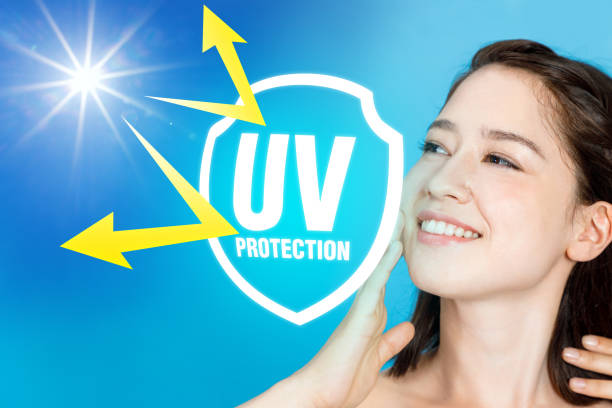What are whitening agents and how are they used in cosmetic products?
An abnormal increase in the amount of melanin in the epidermis is the main cause of hyperpigmentation such as chloasma, or freckles, etc. Some of the principal causes are;
- Exposure to UV light
- Female Hormones, and
- Genetic Reasons
But in many cases, the details of the mechanism are not clearly understood. Consequently, pharmaceutical agents which control melanin production or melanin metabolism are used as whitening agents.
Whitening agents are believed to act on the production and metabolism of melanin in the skin by inhibiting melanin production in melanocytes, reducing extant melanin, promoting melanin excretion in the epidermis, and selective toxicity to melanocytes. The agents which inhibit melanin production, such as arbutin, kojic acid, vitamin C and its derivatives, and placenta extract, are used in whitening cosmetics because of their low toxicity to melanocytes. Whitening cosmetics come onto the market as effective cosmetics in preventing hyperpigmentation such as chloasma and freckles caused by sunlight. Hydroquinone has a strong effect and it is used for OTC drugs in the USA but is not used for cosmetics because of doubts over side effects.
1. Arbutin: Arbutin is the common name for hydroxyquinone-β-D-glucopyranoside. Its ability to control melanin production has been demonstrated by various Vivo and in vitro tests.
In non-cellular in-vitro test systems using tyrosinase, a key oxidase in melanin production, arbutin inhibited the activity of mushroom tyrosinase (commercial grade: Sigma) and tyrosinase derived from B16 mouse melanoma.
In the case of mushroom tyrosinase, arbutin acts as a competitive inhibitor of tyrosinase. In studies at cellular levels using cultured B16 melanoma cells, arbutin inhibited melanin production without influencing cellular increase and also lowered tyrosinase activity. Inhibition of melanin production by arbutin is not based on the melanocyte cell toxicity mechanism shown by hydroquinonemonobenzylether but is thought to either inhibit the activity or production of tyrosinase. Also, arbutin shows inhibition of melanin production without being metabolized to hydroquinone.
The in vivo effect of arbutin on UV-induced pigmentation of human skin has been investigated by double-blind tests and it has been reported that applying milky lotions containing arbutin to the skin has some effect.
2. Kojic Acid
Kojic acid is a γ-pyrone compound, which is produced mainly by microbial fermentation using aspergillus and Penicillium spp. and is important in imparting both color and flavor to miso, soy sauce, and Japanese sake.
Both in vivo and in vitro experiments have shown that kojic acid inhibits melanin production.
In non-cellular in vitro test systems, kojic acid inhibited the activity of mushroom tyrosinase, goldfish, and the black guinea pig tyrosinase. In the case of mushroom tyrosinase, the activity was inhibited by a non-competitive inhibition mechanism. This inhibition is due to the chelation of Cu, a prosthetic group in tyrosinase.
In studies at the cellular level using B16 melanoma cells cultures, it has been confirmed that the addition of kojic acid to the cell culture reduces melanin production and tyrosinase activity.
In in vivo tests, creams containing kojic acid compounds have been reported as effective in preventing pigmentation changes in human skin due to exposure to UVA and UVB.
3. Vitamin C and its derivatives
Vitamin C is known by the name, ascorbic acid and is a typical pharmaceutical agent long used in whitening cosmetics to control the production of melanin. Its effect is two fold:
- it reduces the melanin intermediate compound, dopaquinone, in the tyrosinase reaction which produces melanin from tyrosine, and
- it also reduces the dark-colored oxidized melanin to the lighter-colored reduced form.
Vitamin C is very safe but very unstable. Therefore various derivative compounds are used because of their better stability. Vitamin C phosphate (magnesium salt) has been developed due to its high stability in an aqueous solution.
When vitamin C phosphate (magnesium salt) is incubated with skin homogenate, vitamin C is released. Moreover, since vitamin C is detected in guinea pig skin after continuously applying vitamin C phosphate (magnesium salt) is due to the vitamin C metabolized in the body.
In in vivo tests on the control of melanin production, then products containing vitamin C phosphate (magnesium salt) are used over the long term on highly pigmented skin after UV exposure, skin color value recovers much faster than in untreated areas.
by Wilson Levi
Tue, 03 Oct 23 08:58:04
by Wilson Levi
Tue, 03 Oct 23 08:47:41
by Wilson Levi
Tue, 03 Oct 23 08:44:45
Topics
Jammu & Kashmir - History, Culture & Traditions | J&K Current Trends | Social Network | Health | Lifestyle | Human Resources | Analytics | Cosmetics | Cosmetology | Forms | Jobs
Related blogs
How to make a beauty blog and make money online: A Step by Step Guide for your venture.
Making Money Online has never been easy, and now...How can Blockchain revolutionize the Cosmetics Industry?
How is Blockchain changing the cosmetics or...What are the purpose and functions of shaving cosmetics? | शेविंग कॉस्मेटिक्स का उद्देश्य और कार्य...
Let's learn a bit about shaving cosmetics | आइए...What are different Aerosol manufacturing methods in cosmetics and what precautions should one take...
In physiochemical terms, an aerosol is a colloid...
Quote of the Day
"Time Flies Over, but Leaves its Shadows Behind"



Comments
Thanks for sharing, truely insightful ...